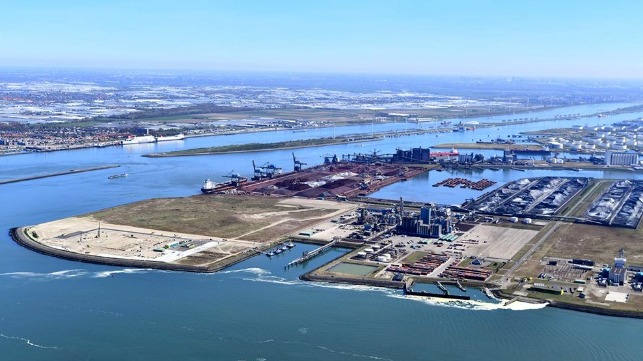Steepest Decline in Cargo Volumes Since 2009 at Dutch Seaports

Throughput at seaports in the Netherlands experienced the steepest decline in 2020 since the 2009 financial crisis. While the impact of the coronavirus pandemic was apparent on shipping, the Dutch national statistical agency Statistics Netherlands (CBS) released a report seeking to quantify the impact on the seaports and trade including the Port of Rotterdam’s which is Europe’s busiest container port.
In 2020, the total volume of incoming and outgoing cargo shipments to and from Dutch seaports declined by more than eight percent to nearly 558 million tons. According to the statics, incoming shipments of dry and wet bulk were the hardest hit in 2020 with substantial declines in volumes. Container throughput, on the other hand, rose slightly in 2020.
Dutch seaports imported nearly three times as much cargo, 377 million tons, versus outbound cargo which was just over 507 million tons. Last year, the transshipment of unloaded goods, which made up 65.5 percent of total throughput, was 11.2 percent lower than in 2019. Outbound sea freight declined by nearly two percent.
By far, the largest declines came in the dry bulk segments, which were down 20 percent overall in 2020. The decline in German steel production contributed to a decline of more than a sixth in coal shipments and nearly a quarter in ores. The largest decline in coal shipments was from the United States, which was down by 38 percent year over year. Similarly, coal shipments from Russia dropped by more than 23 percent, contributing to a decline in cargo volumes from Russia of just over 13 percent. A sixth of all cargo arriving t Dutch seaports however came from Russia during 2020.
The decline in the volume of unloaded ores (down 22 percent) was largely on account of Brazil. The volume plummeted by 6 million tons (down 41.6 percent), while the total decline in incoming ore shipments stood at 7.5 million tons.
The decrease in liquid bulk volume was mainly caused by fewer shipments of petroleum products and crude oil. Fewer flights and less passenger traffic during the coronavirus crisis play a role in contributing to the decline in the throughput of fuel oil, gas oil, and diesel. Overall petroleum products were down nearly 15 percent while crude oil shipments were down more than eight percent.
While bulk goods recorded a sharp drop in throughput, container throughput increased slightly (.4 percent) in 2020. The total volume of incoming and outgoing container cargo amounted to 134 million tons. Outbound container cargo rose by 1.5 percent, while inbound cargo declined slightly for the year.
Like most of the world’s ports, the Dutch seaports saw a strong recovery in volumes in the second half of 2020. Inbound and outbound volumes were each down over one percent in the first half of the year. However, in the second half of 2020, the weight of unloaded container goods was more or less the same as one year previously, while the weight of the loaded cargo was four percent higher.
Almost 98 percent of the containers in the Netherlands are unloaded and loaded in the Port of Rotterdam. Rotterdam is Europe's largest container port with over 14.3 million TEUs, followed by Antwerp (12 million TEU) and Hamburg (8.5 million TEU). In 2020, the number of containers handled in the Port of Rotterdam fell by 3.1 percent while Hamburg experienced a larger decline (down 7.9 percent) while Antwerp recorded a small increase (1.4 percent).
Of the countries in the top 10 of cargo throughput, only inbound shipments from the United Kingdom increased relative to 2019 (2.6 percent). This is because 16.0 percent more crude oil was shipped from the UK.
